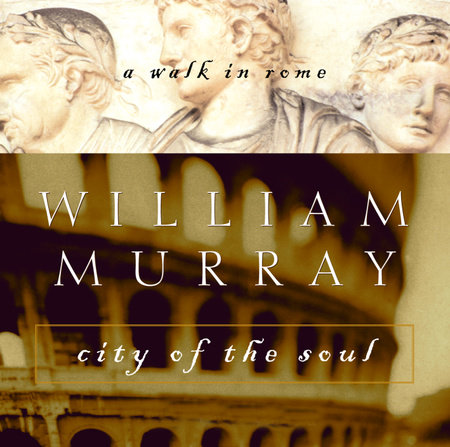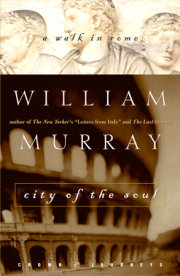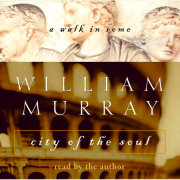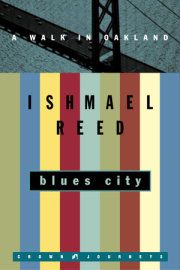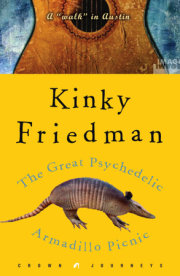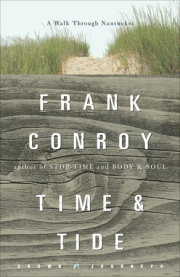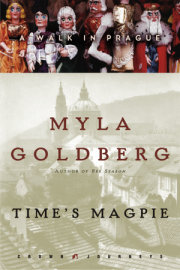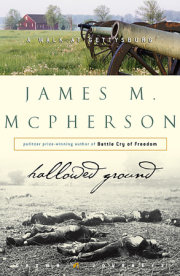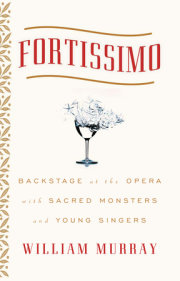One
The entrance into the heart of Rome from the north is through a monumental medieval gate in the ancient Aurelian Wall that suddenly thrusts the visitor into the spacious magnificence of the Piazza del Popolo, one of the city's most beautiful squares. For about a year I walked under this portico every morning on my way to whatever the day would bring. The year was 1949 and I lived then in a small two-room apartment on the Via Flaminia, a couple of blocks away. It was the period of my life when I was studying singing, still hoping for a career in opera as a lyric tenor, while supporting myself as a part-time journalist, mainly as a stringer for the Rome bureau of Time-Life. I always tried to arrive in the piazza early enough to have a cappuccino at the Café Rosati, on the southwestern side of the square, from where I could sit out in the open, read a morning newspaper, and occasionally look out over the great sweep of space, punctuated at its center by the Egyptian obelisk of Ramses III, to the heights of the Pincio gardens across the way. Rome is nothing if not a feast for the eyes. I lived in the city then as an adopted Roman and thought that I would never leave it.
I had spent most of the first eight years of my life in Rome. My mother, Natalia Danesi Murray, was a native Roman, the oldest of three daughters born to an editor and printer named Giulio Danesi and his wife, Ester Danesi Traversari. Giulio died suddenly of septicemia in 1915, leaving Ester nearly penniless. The young widow went to work as a journalist to support herself and her children, became the first Italian female war correspondent by visiting the Austrian front in 1918, and went on to found and edit two leading women's magazines, until forced to flee to the United States in 1936 by her opposition to the Fascist government of Benito Mussolini. My mother had married an American talent agent, after whom I was named, but had soon after separated from him. She was in Italy with me when he went broke in the stockmarket crash of 1929 and she went to work in the theater as an actress and singer to support us. When she brought me back to America in the fall of 1934, I spoke only Italian and French. I soon learned English, however, and became a totally American kid, refusing even to speak Italian at home with my mother and grandmother. My love of music brought me back to Italy in 1947, after the Second World War, when I was twenty-one. I could study there far more cheaply than in the States, and most of the great opera singers I admired were Italian. Within a year of my arrival I had again become fluent in the language and comfortably at home among the ancient stones of the city's centro storico, its historic heart.
I had also discovered that I had a family connection to the Piazza del Popolo. The square was named after the Church of Santa Maria del Popolo, first erected as a small chapel in 1099 diagonally across from where I sat every morning nursing my cappuccino. The site was chosen to liberate the populace from the frightening nocturnal apparitions of the hated Emperor Nero's ghost, whose tomb was reportedly located directly under where the main altar now stands. At the time the chapel was built, the piazza didn't exist; it was merely an open space of vineyards and vegetable plots. In 1227, Pope Gregory IX built the original church. It was torn down and replaced by the present one in 1472, under the supervision of Pope Sixtus V, who was also mostly responsible for the shape the piazza eventually assumed. He placed the obelisk, originally imported from Heliopolis by the Emperor Augustus, in its heart, providing a focus around which, over the centuries, the square assumed its present form.
There are now three churches on the piazza; in 1660 Pope Alexander VII commissioned the building of the twin edifices of Santa Maria di Monte Santo and Santa Maria dei Miracoli, at the southern end, from which three main avenues lead into the centro. But neither is as historically interesting or artistically significant as Santa Maria del Popolo, where, soon after my return to Rome, I was able to look up one of my ancestors, whom my grandmother had once described as an unprincipled thief.
The unprepossessing building nestles up against the Aurelian Wall, to the right of the Porta del Popolo and directly beneath the Pincio. It is a treasure trove of masterpieces, containing works by Raphael, Bramante, Sansovino, and others. Outstanding are the Pinturicchio frescoes in the main chapel behind the altar, and two famously magnificent huge paintings by Caravaggio, The Conversion of St. Paul and The Crucifixion of St. Peter, in one of the side chapels. When I first walked into this church, however, shortly after my arrival in Rome, I went initially in search of my ancestor, the unprincipled cleric from Ravenna who, according to family legend, had despoiled us of our patrimony by leaving everything at his death to the Church. I found his bust mounted high up with several others in a long, narrow side corridor to the right. Cardinal Carlo Traversario, with his long beard, tall miter, and strong nose, stared coldly back at me out of his sightless, bulging eyes as if to rebuke me for my effrontery. "He stole from the poor and gave to the rich," I remember my grandmother telling me, but then, like many Romans, she was a mangiaprete, a so-called priest-eater, someone who believed that too many of the world's injustices were due to the meddling in temporal affairs by members of the clergy.
For all of my early years back in Rome, the Piazza del Popolo remains a constant, the scene of so many major and minor events. Its vastness and its curiously irregular shape contributed to its fascination. In the middle of the nineteenth century the Romans used to play at "blind cat," a form of blindman's buff in which contestants were blindfolded, whirled about a couple of times, and asked to reach the exits from the square into Via del Corso from the base of the obelisk. Few succeeded, a testimony to the deceptively irregular layout imposed on the square by a succession of architects and town planners, including Giuseppe Valadier, who later became famous for his designs in Paris.
Martin Luther is supposed to have fallen to his knees here when he first arrived in Rome, and held up his hands to heaven in thanks, though it did him little good later. The Romans themselves used the square as a promenade, for an evening drive, for carnival and other celebrations. During my time it became the site for the enormous and potentially violent rallies staged by Italy's Communist Party, then the second largest in Europe. From there, after a series of inflammatory speeches, the crowds would sometimes fan out to march through the city, under defiant revolutionary banners and shouting angry slogans. Occasionally the government's tough, truncheon-wielding security cops would break the meetings up, sending protesters fleeing into doorways and up side streets. I covered several of these events for Time, and once even found myself dragooned into participating in one by a Roman stonemason who had done some work for me and became a friend. He dragged me from the sidelines into the heart of the crowd to cheer and shout with everyone else.
Most of the time, however, the great piazza basked in the silence of history. There were very few cars then, and by nightfall none at all. Not only in the mornings but often in the evenings, after dinner, I'd meet friends back at the Café Rosati and we'd sit outdoors, chat, tell stories, and stare contentedly at the scene before us. When the automobile became dominant and pervasive in the early 1950s, overwhelming Italy's ancient towns under a sludge of vehicles, the Piazza del Popolo became a parking lot, while a honking flow of cars, motor scooters, and tourist buses inched past the café, spewing poison fumes toward its luckless outdoor patrons. The square today, however, has again been emptied of traffic and mostly returned to pedestrians, so that it's once more possible to enjoy it. "I was still afraid I might be dreaming," Goethe wrote in 1786, as he entered the city for the first time. "It was not till I had passed through the Porta del Popolo that I was certain it was true, that I really was in Rome."
Two
The only way to really enjoy Rome and to begin to understand the city is to walk about in it. It's not even necessary to follow any particular itinerary. I've always felt sorry for the masses of tourists who are yanked about from one great popular historical site to another in air-conditioned buses, or herded through museums and churches in unwieldy groups led by guides spouting endless statistics and nuggets of often unreliable information. What can they get out of such visits but a bewilderingly kaleidoscopic view of the capital's many wonders, a passing impression of historical time as reflected by such familiar monuments as the Colosseum or the Trevi Fountain?
No one should come to Rome for only a day or two; better to stay home and watch the Travel Channel. This is a city that makes demands upon your attention, that requires a commitment to leisurely exploration. Its ancient ruins, its gleaming Renaissance palaces, its great Baroque basilicas and dozens of treasure-filled churches, its squares and fountains and statues, its maze of narrow cobbled streets, the very stones themselves, which exude an aura of time endlessly indulged, can only be appreciated in the intimacy of personal exploration. And even then you will find that whatever time you may have spent in the city, you will long for more. Like Hawthorne, Goethe, Byron, Keats, Shelley, Twain, and so many other artists and writers and just plain visitors, you will find yourself lured back to it time after time by the fascination it exerts. "For Rome one lifetime is not enough" is the apt title of one Roman author's cheerful reminiscences.
It is necessary, of course, to familiarize yourself with the basic layout of the centro storico, as well as the vast expanse of ancient Roman ruins now open to the public. I suggest the striking of a happy balance. When I brought my wife, Alice, to Rome for her initial visit in the spring of 1975, she spent her first five mornings in the city taking the guided tours that whisked her expeditiously to Rome's most celebrated monuments--the Colosseum, the Imperial Forum, the Campidoglio, the Pantheon, St. Peter's and the Sistine Chapel, the Castel Sant'Angelo, the Catacombs, the Trevi Fountain, the Circus Maximus, the Baths of Caracalla, the major churches and museums and the grander piazzas. In the afternoons, however, she struck out on her own, a reliable guidebook and map in hand, to immerse herself in the intimate life of the city's heart.
A walk anywhere in Rome cannot be hurried. I still like to stroll at random through the snarled cobweb of the centro, pausing every few yards to look around, then unfailingly up the building walls where, no matter how familiar the area or how many times I've already walked that way, I always spot something I haven't noticed before--a cornice, an inscription, a fragment of a ruin, an arch, a statue. Rome cherishes her past and nothing is ever discarded here, which is one reason why it took an entire generation to build a subway system. Everywhere the engineers dug, they came across some memento of the city's glorious past and all work stopped, often for months, while archaeologists and experts from the Department of Antiquities and Fine Arts evaluated the find and determined how best to preserve it.
The rules, whether enforced or not, never seem to go out of date. Recently on the Via Montoro, a narrow little street near the Campo dei Fiori, I glanced upward and spotted a marble tablet on the corner of a large seventeenth-century palazzo that read, "By order of the resident Monsignor of the streets, it is forbidden to discard rubbish in this place under penalty of fifteen scudi and other penalties in conformity with the edict promulgated May 22, 1761." I had never been in the Via Montoro before or noticed such a sign, but since then I've become aware that it's to be found on the corners of many buildings all over the centro.
The scudo, a gold or silver coin issued all over Italy from the sixteenth century to the early nineteenth, is now a collector's item, but I suspect that somewhere, in some hidden nook of one of Rome's ancient government buildings, the Monsignor of the streets still sits at a desk emanating edicts. In Rome, no bureaucratic entity is ever allowed to die, a fact pointed out some years ago by the well-known journalist Luigi Barzini Jr. Somewhere, he maintained, in some Kafkaesque warren hidden from the prying eyes of inquisitive reporters, someone still administers an office overseeing the veterans' affairs of Garibaldi's Redshirts or the welfare of the Vestal Virgins. A walk in Rome is also an insight into the mysteries of survival.
Of the three main arteries leading out of the Piazza del Popolo into the centro, the one I favor the least is the Via del Corso, which cuts straight through the heart of the city all the way to Piazza Venezia, with its medieval palace, now a museum, from whose balcony Benito Mussolini used to harangue the Fascist mobs, and the enormous gleaming white bulk of the Vittorio Emanuele Monument, completed in 1911 to commemorate the unification of the country and which now also houses the Tomb of the Unknown Soldier. Some people refer to the monument as a wedding cake, but to me it looks like an old-fashioned typewriter and I've always hoped in vain that someday it would be torn down. Its removal would provide visitors with direct access to the Campidoglio on its hilltop, with the Imperial Forum laid out diagonally in splendor behind it all the way to the Colosseum. A selfish pipe dream, because to many Italians the monument is as honored a relic as the Statue of Liberty or Paris's Arc de Triomphe.
The Corso has always been considered the city's main thoroughfare, even when it was merely a long, narrow street hemmed in on both sides by palaces, houses, shops, and the open stalls of street vendors. In the Middle Ages the Romans began racing horses down it from the obelisk to Palazzo Venezia, a practice that continued for centuries. Successive generations of popes periodically widened the avenue and banned the humbler merchants from the area. By the late eighteenth century it had become a daily rendezvous for the nobility and the upper middle classes in their horse-drawn carriages, which also attracted to the area the sort of elegant shops that catered to the wealthy. Mussolini, with his grandiose dream of recreating the Roman Empire, disfigured one whole section of the Corso by tearing down centuries-old houses in order to widen it still further, presumably for triumphal processions. One section now consists of several examples of the sort of imperial architecture the dictator fancied: great, gray, soulless monoliths embodying the Fascist dream of conformity and order at all costs. What Mussolini couldn't control or alter was the chaotic vehicular and pedestrian traffic that swarmed up and down the Corso all day long; it was neither dignified nor respectful. Exasperated, he decreed that people should walk in one direction only, on alternate sides of the street. That effort also failed, which may account for the possibly apocryphal story that the dictator, when asked by a foreign diplomat whether it was difficult to govern the Italians, replied, "No, it is not difficult, but it is useless."
Copyright © 2003 by William Murray. All rights reserved. No part of this excerpt may be reproduced or reprinted without permission in writing from the publisher.

